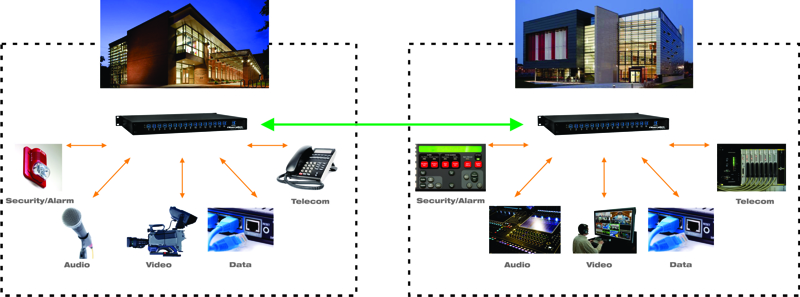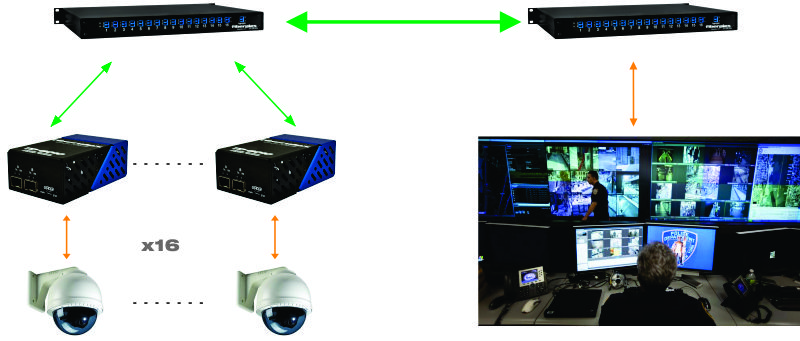
WDM Theory of Operation
Infrared light has a frequency of approximately 400 Terahertz (400,000 Gigahertz). That is about 125,000 times higher than the data rate of a typical 3 Gigabit SFP, which means a large proportion of the bandwidth of a fiber optic cable is wasted. The current state of the art does not allow utilizing all of that bandwidth, but we can recover some of it by a technique called “Coarse Wave Division Multiplexing,” or “CWDM.”
Essentially, it is the simple technique modulating light on different frequencies in that 400 Terahertz bandwidth. This is done through a series of optical filters and combiners, along with lasers and photodiodes tuned to a particular infrared center frequency. Historically, however, optics are referred to, not by their frequency, but by their wavelength, which is the speed of light divided by the frequency expressed in nanometers (nm).
Active Wave Division Multiplexer 8/16 Channel
Passive Wave Division Multiplexer 8/16 Channels
Application in a Campus Solution

Application in Surveillance

.png?width=259&height=111&name=LOGO%20technologies%20v2%20(5).png)


.png?width=500&height=141&name=WDP16_500%20(1).png)
